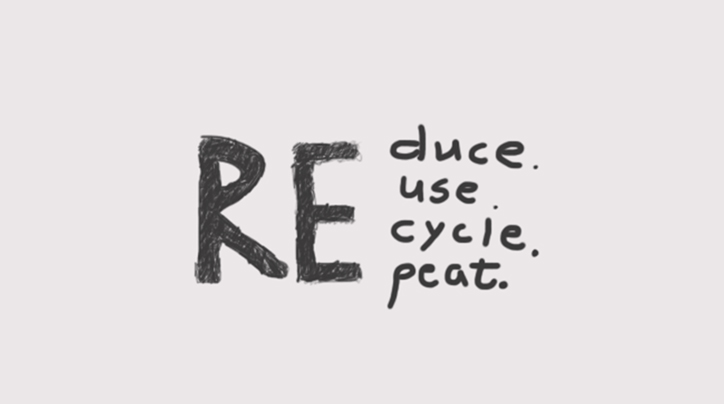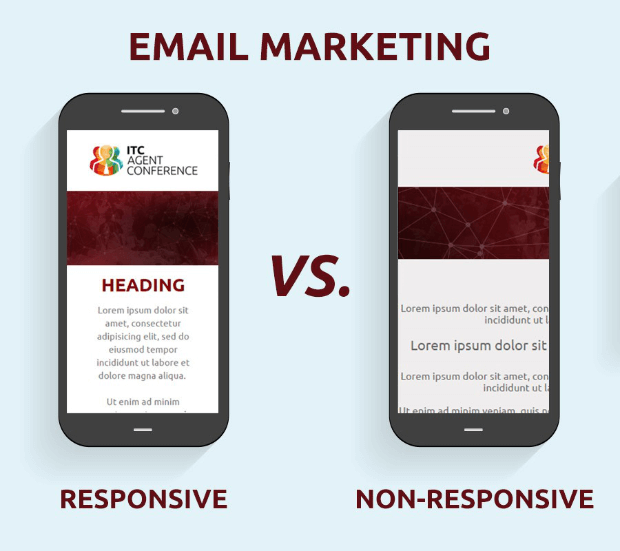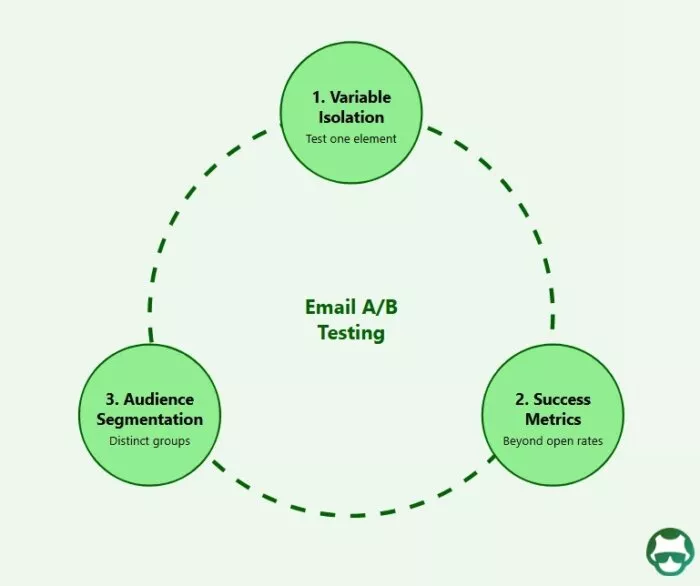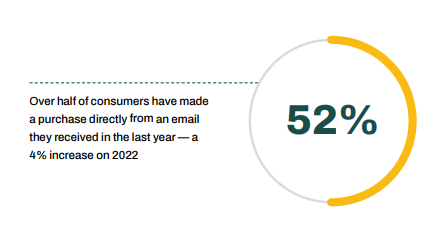blog
10 Common Email Marketing Mistakes Big Brands Still Make

Even today, email marketing is one of the oldest and most essential components of a strong marketing strategy. It is considered the most effective digital channel for connecting with customers.
Studies show it delivers one of the highest returns compared to social media or paid ads. Still, even top global brands make errors that cost them clicks, conversions, and trust.
With 4.59 billion email users in 2025 and nearly 300 million more predicted by 2027, minor errors now have a huge impact.
If you’re investing in email marketing design services or building campaigns yourself, it’s important to learn from others’ mistakes.
Below are the 10 most common email marketing mistakes and how you can avoid them.
1. Ignoring Mobile-Friendly Design

Source: OptinMonster
Over 75% of all email opens now happen on mobile devices. Three out of every four people see your emails on their phone, not on a computer.
If an email is hard to read, buttons don’t work, or the layout breaks, many users delete it within seconds. In fact, 42% of users delete emails that aren’t mobile-optimized.
Big brands are still sometimes designed for desktops and forget to test on phones, risking broken elements or invisible CTAs. That’s why professional email marketing design services prioritize mobile-first layouts to ensure campaigns look good on every device. To fix this,
- Design for mobile first: use one-column layouts, short copy, and large, tappable buttons.
- Always preview on phones, including in dark mode, where colors or transparency may look strange.
Best practices:
- Use at least 16px font for body text.
- Keep buttons large (44×44 px) for tapping.
- Test designs in both light and dark mode.
2. Failing to Segment Your Email List
Segmenting your pool of customers and email lists will help you achieve a higher open rate, more conversions, and fewer unsubscribes. How you segment your email list will entirely depend on the business you are working with, the products you need to sell, your customers, and many other factors.
For example, consider a health and fitness brand such as FitNation, which offers various health offerings, supplements, and exercise programs. Their customers range from newbies looking to lose weight to experienced professionals preparing for competition.
It wouldn’t give you a result if you sent a generic email here to everyone. So, a person searching for a beginner’s yoga plan isn’t interested in a high-intensity weightlifting program.
To address this issue,
FitNation uses a divided email strategy. When someone signs up, they’re asked about their fitness goals, like “Weight Loss,” “Muscle Gain,” “General Health,” or “Rehabilitation.” They also collect age, gender, and preferred workout style.
This is exactly where experts like Tangence can help you streamline segmentation and create personalized flows that boost open rates and conversions.
3. Using a “No-Reply” Address
A no-reply email address shuts down customer communication. It sends the message that feedback is not desired and makes the user feel abandoned. To top it off, filters often distrust no-reply addresses and direct them to the spam folder.
- Missed opportunities to address questions.
- Lower trust and engagement.
- Lower deliverability with time.
What to do instead:
- Employ monitored addresses such as support@ or hello@.
- Set auto-responders to confirm receipt.
- Send route answers to customer service teams.
Constructive responses foster better relationships.
4. Weak or Lack of Clear Call-to-Action
54% of Americans report opening marketing emails because the offer or product interests them.
That focus is earned and must take the sender somewhere. One of the worst email marketing errors is failing to bridge that interest with a tangible next step.
In online marketing, where each click can be tracked, an unclear or difficult-to-spot call-to-action (CTA) slows lead flow and disempowers conversion potential.
Audiences shouldn’t be forced to choose from five buttons or scroll through counter-offers to discover what they care about.
Actionable, direct actions tied to one result are what advance campaigns and translate intent into quantifiable results.
To address this,
Use short, descriptive language such as “Book your demo,” “Start your trial,” or “Reserve your seat.” Position the CTA where it can’t be overlooked, preferably at the top and again towards the end.
Use design to reinforce the CTA, not to divert attention from it. One CTA supported by applicable messaging and an emotive tone is more potent than several alternatives fighting for attention.
5. Neglecting A/B Testing and Metrics

Source: GrowBro
The biggest failure of email campaigns is not doing A/B testing and quitting too soon. Sending without testing is known as guessing. Open rate, click rate, bounce, and unsubscribe tell you what’s working.
A/B testing educates you: try two subject lines or two buttons, then take the better one and save it for next time. Without that, you cannot fine-tune. And because of things like Apple Mail Privacy Protection, open rates will occasionally not tell the whole story, so paying attention to clicks and conversions is more crucial than ever.
Pay attention to what people do and keep experimenting, the data always helps. Long-term, you will end up having an email marketing system that’s paying off for the time and effort you’ve invested in it.
6. Depending More on Automation
As the number of automated email campaigns increases, so do the kinds of errors that are made.
Even though 58% of email programmers automate emails, most still make mistakes that can be prevented.
Even though automation brings efficiency and consistency, overusing it or using it without oversight will make emails cold, robotic, or worse, irrelevant.
For instance, an auto-birthday offer to a customer who has not been active may seem tone-deaf. Or worse, sending the wrong name or recommendation due to poor data may harm your credibility.
- If you want to personally reach a particular client or investor, writing a brief, well-thought-out, and well-researched email is well worth it.
- A personally written note addressing them straight and directly to their needs and goals can make a big difference amidst many auto-promos and mass mailings.
The best strategy is to blend automation with human touch. Use automation to scale, but keep personalization and judgment in the loop to build real connections.
7. Opt-In Offers That Are Too Complicated
Opt-ins are the beginning of a relationship-building process, but most brands make it more difficult than it has to be.
Extended forms, a ton of offers, or ambiguous value propositions. Reduce your list size before it begins and slow down users.
52% of consumers have made a purchase directly from an email in the past year, which means getting their address upfront matters, and so does how you ask for it.

Source: Campaign Monitor
Best Strategy
Create multiple opt-ins around a person’s various needs and keep each of them focused on a quick win. Use double opt-in to guarantee list quality and engagement protection.
If your email platform makes that hard, it’s worth rethinking the setup.
8. Using Generic Templates
Generic templates can get the job done quickly, but usually at the expense of trust and recognition.
64% of people report that they are more inclined to read emails from companies that they trust, and trust can only come from familiarity.
When images, tone, or color seem incongruent, the email could have originated from anyone.
Over time, that lack of continuity chips away at recognition and makes engagement less predictable.
Best Strategy
- Personalize templates through your brand’s visual language so every email is familiar and consistent, no matter the message.
- Match fonts, colors, style of images, and design of CTAs across campaigns to deliver a consistent experience.
- Slack, for example, uses its branded hue scheme, typography, and visual rhythm to make emails feel immediately familiar.
9. Poor Hygiene List
Unhealthy lists with bounced addresses, spam traps, or old inactive users decrease performance. Large brands usually neglect routine list cleaning, which results in wasted sends and bad deliverability.
Allowing inactive or invalid addresses to accumulate increases the likelihood of your messages being filtered out or marked before they’re viewed.
China and the United States collectively contribute to approximately 7.8 billion spam emails daily, and inbox providers utilize that noise to filter aggressively.
Smart Strategy
- Delete contacts not clicked or opened within a predetermined time frame and utilize confirmed opt-ins to defend against bots and spurious signups.
- Send re-engagement emails before deleting inactive users, allowing them to opt-in again or refresh preferences.
10. Sending Excessive Emails
Just because someone has joined your email list doesn’t mean you must bombard them with emails
While there’s no rule of thumb regarding how many times you should click the send button to the list, you’ll want to achieve a balance between staying in contact regularly with your subscribers and not drowning them.
If you’re just starting out with email marketing or are still growing your list, send out a monthly email to your subscribers. From this point, you can effectively test the responsiveness of your list and the calibre of your emails.
If your subscribers are willing to receive your emails and enjoy your content, you can double your frequency to twice a month or even once a week.
The Final Thoughts
Even the biggest brands with enormous budgets fall into the same pitfalls as smaller businesses. Thankfully, most of these email marketing mistakes are avoidable. If you implement compliance guidelines, control frequency, create for mobile, and prioritize user experience, you can enhance engagement and inbox placement.
When teams struggle with execution, expert email marketing design services will produce clean, accessible, and responsive templates. No matter how minor the correction is, it increases the efficacy of your campaigns and gives your subscribers a sense of respect.
Avoiding these ten errors is essential for creating long-lasting relationships with customers as well as for improving marketing.
If you don’t want to make mistakes in email marketing? Partner with Tangence today to design smarter, high-converting email campaigns that your audience will love and respond to.
